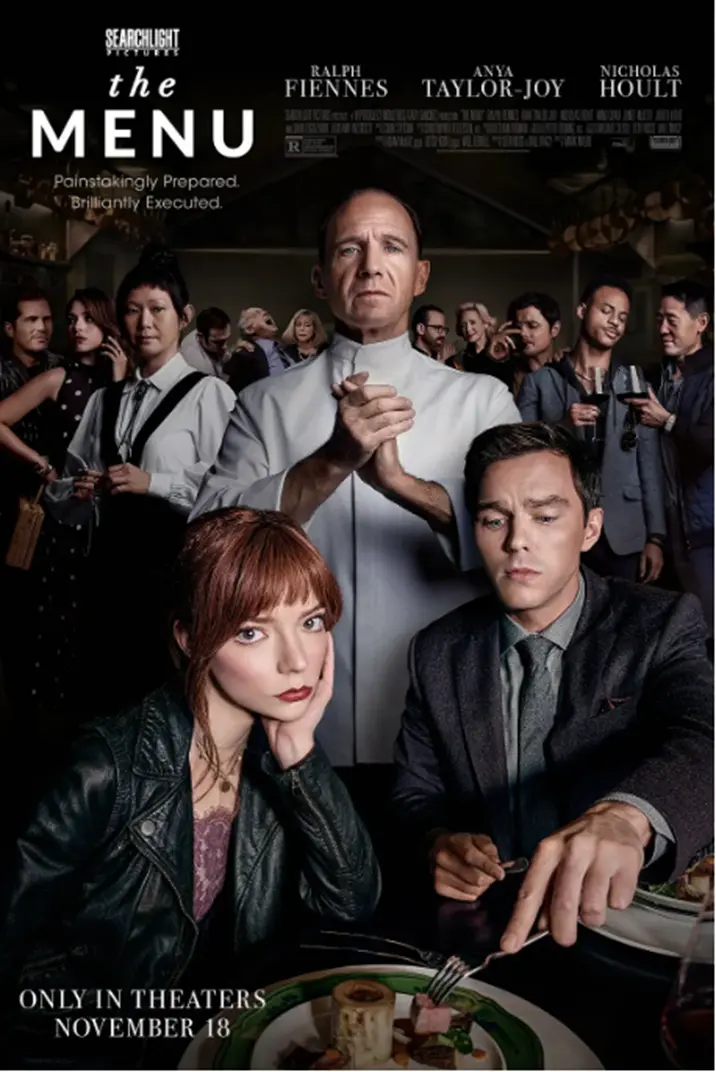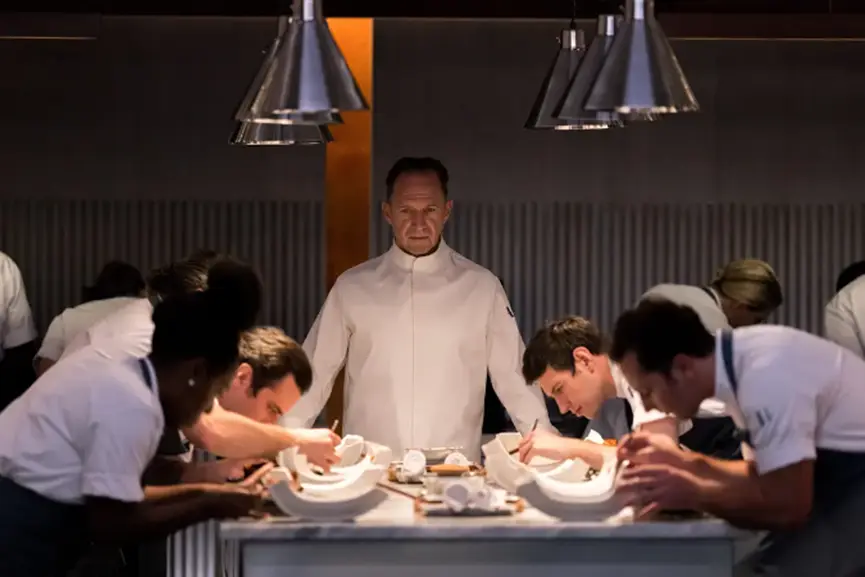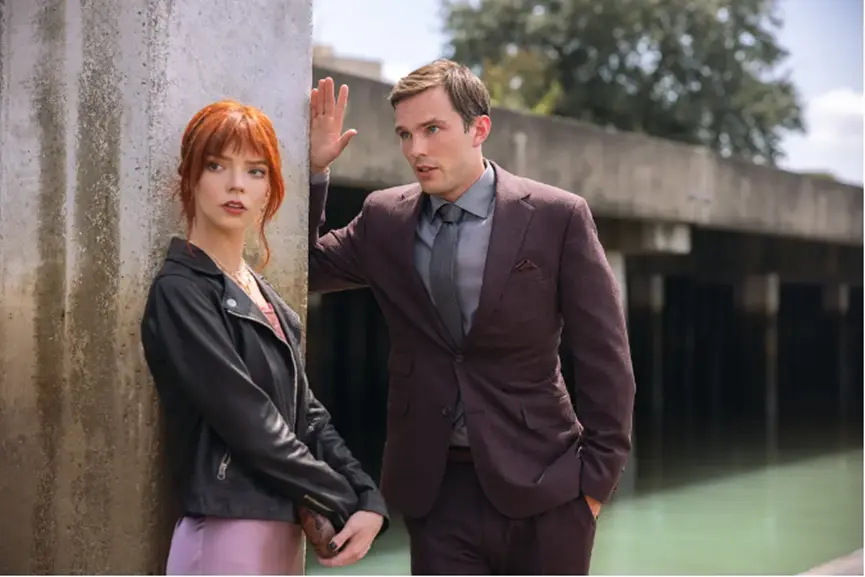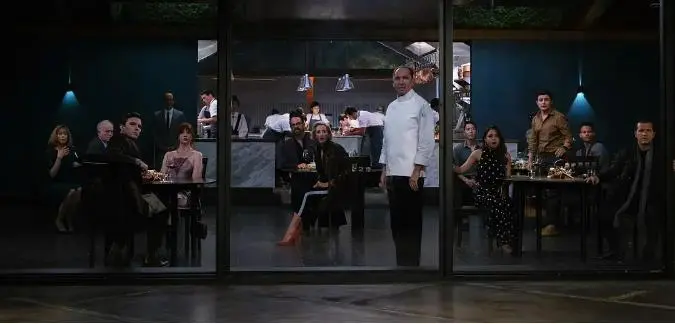A luxury necklace may bring beauty and vanity, but it does not inspire the emotions of an artist.
The Menu is featured a great cast, including Ralph Fiennes, Anya Taylor-Joy, Nicholas Hoult, and the director of two fantastic TV dramas: Succession and Shameless, Mark Mylod. After watching the movie, although it is not perfect, but the movie rhythm and creativity are remarkably good.
What I love most about this movie is its mockery of fine dining. The chef thinks he's creating art by creating a unique dining experience, while the heroine, Margot, thinks it's bullshit. The funny thing is Margot escaped because she ordered a cheeseburger.

I used to work as a journalist, in charging of the fashion report. I've heard a lot of people in the luxury industry were like "We're doing art.", but it seems to me that even a wine is going to have an exhibition for branding, saying it's art. Every time I hear fashion people talk about this, my heart rolls a million eyes.
My partner has been running news in the field of food & beverage for some time, Michelin and Black Pearl restaurants are the place he often goes to, very soon later, he knows almost every Black Peral or Michelin restaurant in the town. He is proud of how many Michelin restaurants he has eaten, or he thinks it is worth showing off how much he knows about steak Wellington. Because my friend thinks it's high level artsy, but I know he's like most food journalists, he's just an over weighted guy who often eat too much every meal.
The movie's attempt to use a "chef who creates artistic experiences" as a joke, which is interesting. But in the end, can restaurants and chefs create an art form based on cooking?

In my opinion, the answer is: Sorry, I don’t think they can.
It’s like Alexander McQueen, or Joel Robuchin, they are both great fashion designers, they're great cooks, but unfortunately, what they do is not art.
Because clothing is meant to be worn, and food is meant to be eaten -- they are trapped in the material world.

Many years ago, I’ve an article, it is related to "Can Fashion and Food Be Great Art?", which was reporting, but I still like the opinions of The Guardian's commentators.
Bon appetite.
"Food is meant to be eaten, and clothes are meant to be worn," Jonathan Jones, the Guardian's art critic, wrote in a blog in May entitled "Why food and fashion cannot be great art."

However, some fashion brands, especially some luxury brands, do not think so. They think their work is extremely artistic.
A few days after Jonathan Jones' post, French luxury brand Louis Vuitton announced a controversial exhibition titled "Art Time and Space Journey" at the National Museum of China, which will run from late May to August 30 in that year.
Meanwhile, top Swiss watch brand Vacheron Constantin opened an exhibition at the National Museum of Singapore called "Vacheron Constantin Collection - A watchmaking Legend from 1755", which features more than 180 rare timepieces.
The story does not end there. Italian luxury jewelry brand Bulgari announced "125 Years of Classic Italian Design Art," which will run until November 2022.
Whether the brands boast that these exhibitions "showcase 150 years of craftsmanship" or "offer a glimpse into the history of watchmaking since the 18th century," museum visitors can't help but ask: Are these exhibitions truly great art or a new marketing promotion for luxury goods?
As the exhibition opened, Juan-Carlos Torres, Vacheron Constantin's chief executive, was asked bluntly by a Chinese journalist: "Do you think it's a new way for luxury brands to show in emerging markets, like Asia?"
"It's an interesting question," Torres replied, "but I don't think the Vacheron Constantin show is a sales pitch. We just wanted to share. "

Lee Chor Lin, director of the National Museum of Singapore, hit back at the question. "The real purpose of museums is to connect people and history. In our museum, we present Singapore in many ways. We think audiences can learn history from many things: fashion, photography, movie, even food. So why not a watch?"
Lee Chor Lin made a tongue-in-cheek jab at a journalist who was still skeptical, dismissing the exhibition as artistically uninspiring: "You're obviously not a watch wearer."
Thousands of miles away in Beijing, at the National Museum of China, Amanda Triossi, curator of the Bulgari exhibition, says the Bulgari show is not just about jewelry. "People always think that jewelry is not serious art, and this exhibition can change people's narrow concept."
But Mr. Wang, who was strolling around the museum, was clearly unhappy with the exhibition. Mr. Wang, who is a frequent visitor to the museum for more than 30 years, said that compared with some exhibitions of Chinese porcelain and paintings, the Bulgari show clearly has no artistic value, but rather shows off wealth.
"The first task of a museum should be to make art available to the public. The lifestyle brought by luxury goods can be understood and accepted by Westerners, but it is too far away for Chinese people. There is even an extra charge of 10 yuan for the exhibition. It's more about the hubris of luxury." Mr. Wang said.
Mr. Chen, the deputy director of the National Museum, told Wenhui Daily that audience criticism of the museum is common around the world.

"The core is where the soul of the National Museum is. Our soul is in diversity. Bvlgari exhibition at here will only last for three or four months, but the Ancient China exhibition will not change in at least three or five years. Our main product is not deviated. In the diversified exhibition layout, there are more choices for the audience to come in, " Mr. Chen said.
The theory coincides with the Louis Vuitton exhibition. The director of the National Museum told China Culture Daily that by displaying LV, The National Museum values a brand’s artistic concept.
"Some people say the ancient goods are also belongs to luxury, I actually agree on this point of view. Silk, porcelain, jade and bronze were luxuries in those days, but today they are the most glorious pinnacle of our civilization. In fact, LV's artistic philosophy, people-oriented creative design and integrity are worth learning and thinking about for today's Chinese companies, " The director of the National Museum said.
A reporter from the Economic Observer, was lucky enough to visit all three exhibitions mentioned above. The reporter has a set of criteria for whether a luxury item has artistic value in a museum exhibition.
"Imagine if the labels were removed and they still inspired people, they could become part of the exhibition," the reporter said.
The reporter likes Vacheron Constantin's exhibition at the National Museum in Singapore because it really "shows the history of European watchmaking culture", a part of history that Asians rarely see.
The Guardian reporter Jones may have a different opinion. On his blog, he tries to ask readers to compare a still life picture of food with a plate of real food.
"Pictures, obviously, are not real food because they do not satisfy hunger like food. But it evokes deeper emotions. It goes to the heart of the human psyche, where chefs and costume designers don't go."
The relationship between luxury goods and art is similar. A Bulgari necklace may bring beauty, but it does not inspire the emotions of an artist.
"Art is about ideas. It's metaphysical. It brings things straight to our minds. Fashion and food can't be serious arts because they're so wrapped up in the material world, "Jones perhaps sums it up best.


 Log in
Log in

No comments yet,
be the first one to comment!